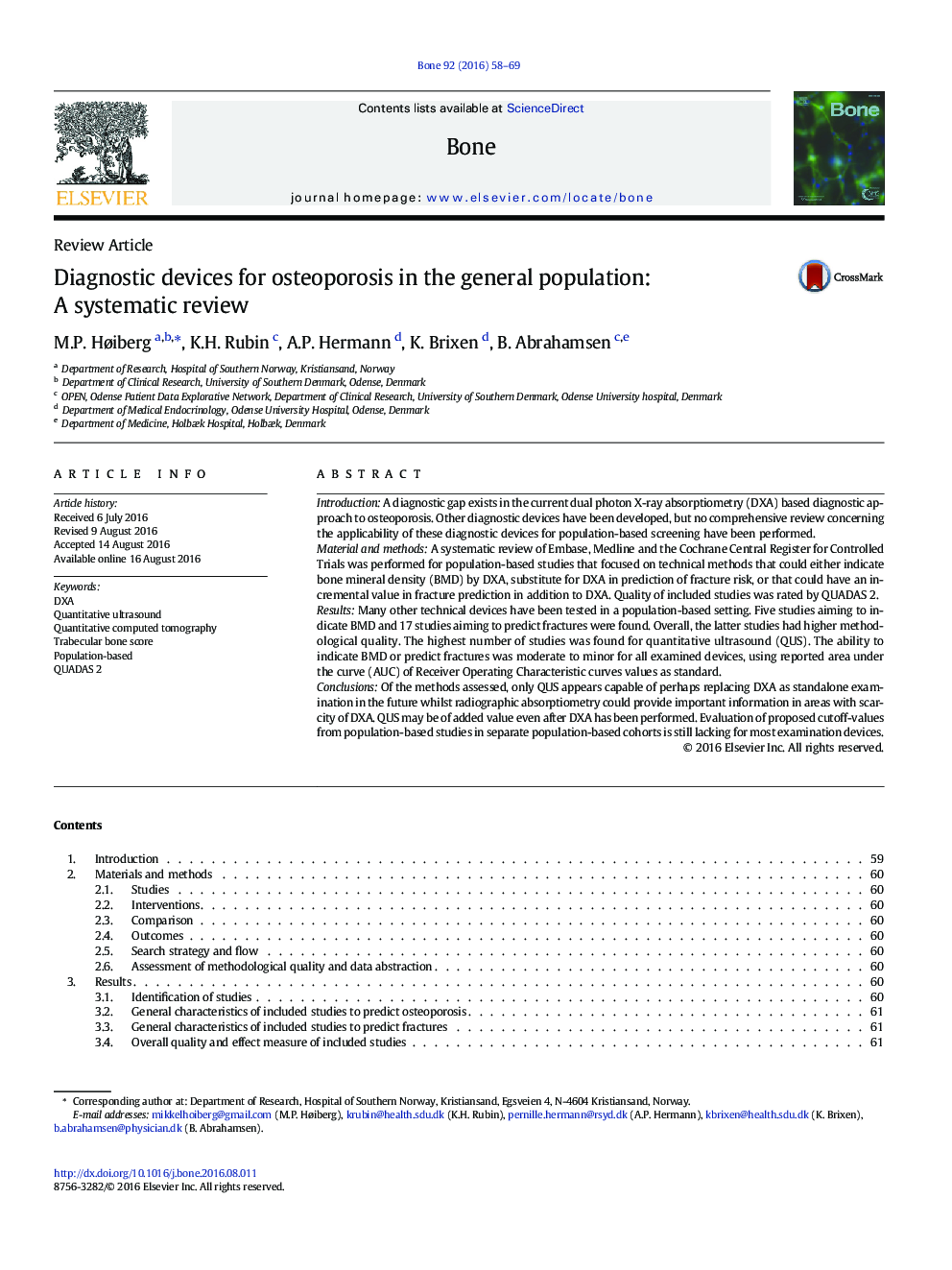| کد مقاله | کد نشریه | سال انتشار | مقاله انگلیسی | نسخه تمام متن |
|---|---|---|---|---|
| 5888744 | 1568127 | 2016 | 12 صفحه PDF | دانلود رایگان |
- A diagnostic gap exists in the diagnostic approach to osteoporosis and population-based screening is suggested as a remedy.
- Technical devices for indication of osteoporosis or prediction of fractures in a population-based setting were examined.
- Studies aiming at the prediction of fractures were of higher quality than studies aiming at indication of osteoporosis.
- Only QUS appears capable of perhaps replacing dual photon X-ray absorptiometry.
IntroductionA diagnostic gap exists in the current dual photon X-ray absorptiometry (DXA) based diagnostic approach to osteoporosis. Other diagnostic devices have been developed, but no comprehensive review concerning the applicability of these diagnostic devices for population-based screening have been performed.Material and methodsA systematic review of Embase, Medline and the Cochrane Central Register for Controlled Trials was performed for population-based studies that focused on technical methods that could either indicate bone mineral density (BMD) by DXA, substitute for DXA in prediction of fracture risk, or that could have an incremental value in fracture prediction in addition to DXA. Quality of included studies was rated by QUADAS 2.ResultsMany other technical devices have been tested in a population-based setting. Five studies aiming to indicate BMD and 17 studies aiming to predict fractures were found. Overall, the latter studies had higher methodological quality. The highest number of studies was found for quantitative ultrasound (QUS). The ability to indicate BMD or predict fractures was moderate to minor for all examined devices, using reported area under the curve (AUC) of Receiver Operating Characteristic curves values as standard.ConclusionsOf the methods assessed, only QUS appears capable of perhaps replacing DXA as standalone examination in the future whilst radiographic absorptiometry could provide important information in areas with scarcity of DXA. QUS may be of added value even after DXA has been performed. Evaluation of proposed cutoff-values from population-based studies in separate population-based cohorts is still lacking for most examination devices.
Journal: Bone - Volume 92, November 2016, Pages 58-69
